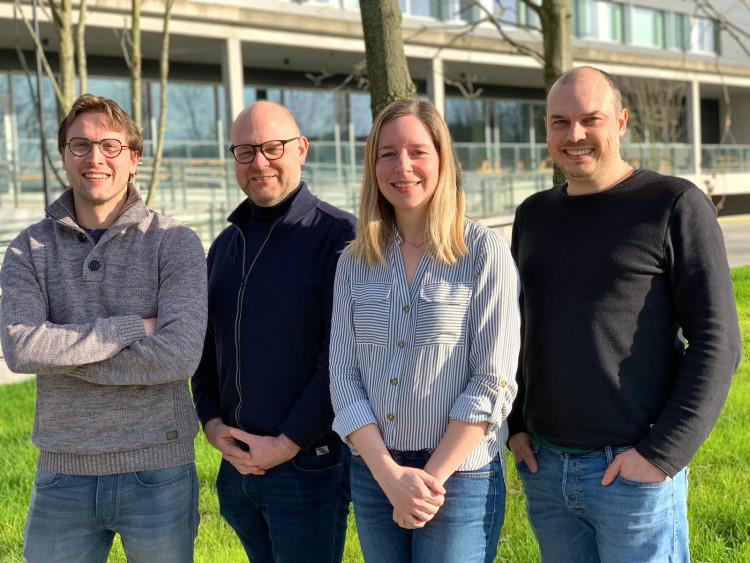Flemish researchers launch OPENPichia, an industrial open access yeast system for the production of proteins
A team of researchers at the VIB-UGent Center for Medical Biotechnology has succeeded in reconstructing one of the most important industrial expression systems for proteins in open access. Pichia pastoris, a yeast used in the biopharmaceutical industry is often used to produce molecular building blocks. Up until now, use of this technology was restricted by a paywall. Thanks to this research, a similar expression system can be offered at a much lower cost. Additionally, results of new research using this open access system can be shared more easily. The results of this research have been published in the Nature Microbiology.
Expression systems are used in large scale biotechnological production processes for the creation of proteins. Proteins produced in this way account for the vast majority of economic value in the biotechnology sector. For example, there are hundreds of pharmaceuticals whose active ingredient consists of a protein. A rapidly growing sector is one in which proteins are produced via microorganisms for use in (vegetarian) foods. Those expression systems use easily culturable, safe natural cells as a base. In those cells, the necessary information is built in to produce the desired protein. Then the cells are grown in large controlled and fully isolated vessels, after which the protein is purified from the cells or from the culture soup. Although several types of expression systems exist today, more than 90% of biotechnology production work is done with only four systems: the E. coli bacteria, two types of mammalian cells and the yeast strain Pichia pastoris.
The advantages of Pichia pastoris as an expression system have long been known. For example, it is an excellent way to culture biological components used for therapeutic purposes. Also, the yield of expression via Pichia pastoris is often high, which is a significant advantage in e.g. production of proteins for drugs. The basic strain of Pichia pastoris on which all commercial expression systems are grafted is not freely available, despite the expiration of the patent, due to further contractual restrictions.
Because the yeast strain is behind a paywall, researchers and companies who want to use the strain today must pay a significant financial fee. For a long time, this made it less interesting for both companies and researchers to work with the expression system, even though it was often the best solution technologically. Moreover, this undesirable situation made it difficult for researchers to smoothly share improvements in the expression system. Indeed, this was often not allowed by contract and thus impeded smooth progress.

The OPENPichia team. Fltr: Robin Vanluchene, Nico Callewaert, Katrien Claes and Dries Van Herpe.
Reverse engineering a yeast strain
Until now, because a research group at the VIB-UGent Center for Medical Biotechnology has managed to uncover the secrets of the basic strain of the expression system through reverse engineering. Through comparative genome sequencing, the team was able to deduce which specific yeast strain is involved. Specifically, it is a yeast strain that Dutch botanist and yeast strain specialist Herman Phaff isolated from a black oak tree (Quercus kelloggii) in the Yosemite region. That strain was deposited back in 1954 in the Phaff Yeast Strain collection at the University of California at Davis.
With that knowledge, a team of scientists led by Professor Nico Callewaert and team leader Katrien Claes went to work. They analyzed four similar strains from public culture collections in various countries, and concluded that one specific strain, NCYC 2543, was a good candidate to develop a freely available Pichia strain with. With success, the team now has a freely available expression system under the name OPENPichia ready.
Dr. Katrien Claes, first author of the research paper: "Thanks to our analyses, reverse engineering allowed us to build an open-access Pichia chassis that allows anyone to produce recombinant proteins to industrial standards. To achieve that, we completely mapped the genome of 4 yeast strain archetypes. Based on that knowledge, we were able to use one of those archetypes with a quasi identical genome to the original strain to arrive at our optimized OPENPichia strain via insertion of a crucial genetic change from the industrial strain. This was then thoroughly tested so that we could demonstrate that OPENPichia produces equivalent or better than the industrial strain used so far by the thousands of Pichia-using labs and companies. We expect this to have a major impact on our research field and biotech protein production."
Open access science
The OPENPichia strain and an associated open access system to insert the genetic protein information is now offered at negligible cost. This should enable further scientific research based on this expression system, without restrictions on the broad distribution of the resulting yeast strains from such research.
Nico Callewaert, Director of the VIB-UGent Center for Medical Biotechnology: "Pichia pastoris was still contractually in a kind of twilight zone. Although the patent on the technology had expired years ago, there were still certain contractual concerns that curtailed the use of this expression system. So we launched OPENPichia to solve this problem once and for all, so that researchers can use an expression system that is identical by all relevant standards, free of royalties and restrictions on wide distribution. This should promote innovation of the system and, in time, reduce the cost of drugs, for example, that build on this technology."
The research described was made possible in part thanks to VLAIO, Ghent University, the Bill and Melinda Gates Foundation and FWO.
Learn more at https://openpichia.com.
